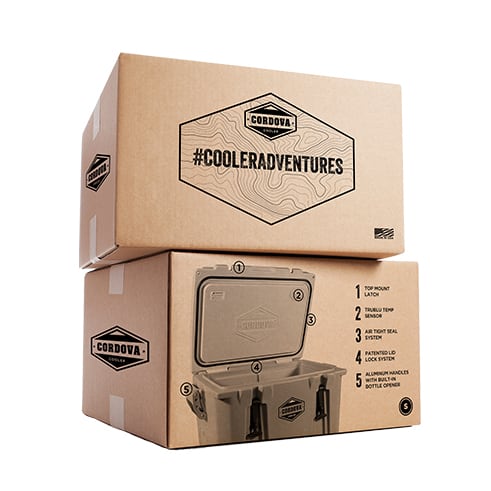The Science Behind Successful Media Planning: Strategies and Best Practices
October 19, 2023
Developing a successful media plan and strategy is a critical component of any marketing strategy. It’s no longer enough to create compelling content or products; you need to ensure that the right people see it at the right time and in the right place. This is where media planning comes into play. Media planning is both an art and a science, as it involves a combination of creativity and data-driven decision-making. Below, we’ll delve into the science behind successful media planning, exploring key strategies and best practices to help you maximize the impact of your media campaigns.
The Foundation: Understanding Your Audience
Media planning starts with understanding your audience. You need to know who your target audience is, what they are interested in, where they spend their time, and what influences their decisions. This understanding is crucial because it forms the basis for all your media planning efforts. To gather this data, you can use a variety of research methods, including surveys, social media analytics, and customer feedback.
Once you have a clear picture of your audience, you can create detailed audience personas. These personas represent your ideal customers and help you tailor your media planning efforts to their preferences and behaviors. For instance, if you discover that your target audience spends a lot of time on Instagram, you’ll want to focus your media planning efforts on that platform.
The Science of Data Analytics
Data is at the core of successful media planning. You need to collect, analyze, and interpret data to make informed decisions about your media campaigns. There are several key data-driven aspects to media planning:
- Demographics: Demographic data provides insights into your audience’s age, gender, location, and income. This information can guide your decisions about which media channels to use and when to reach your audience.
- Psychographics: Psychographic data goes deeper, providing information about your audience’s values, interests, and lifestyle. Understanding psychographics can help you create content and messaging that resonates with your audience on a personal level.
- Behavioral Data: Behavioral data tracks the online behavior of your audience, such as the websites they visit, the content they engage with, and their online purchase history. This data is invaluable for targeting and retargeting strategies.
- Media Consumption Patterns: Analyzing when and how your audience consumes media is essential. This data helps you determine the best times to run ads or publish content, and on which platforms.
- Competitive Analysis: Analyzing your competitors’ media strategies can provide insights into what works in your industry. You can learn from their successes and mistakes to refine your own media planning efforts.
- A/B Testing: Experimenting with different media approaches through A/B testing allows you to refine your strategies continually. It’s a scientific method for optimizing your campaigns based on real-world results.
Channel Selection and Optimization
Once you have a solid understanding of your audience and relevant data, it’s time to select the right media channels. This is where the science of media planning meets creativity. Consider the following when choosing your channels:
- Media Reach and Frequency: Determine how often you need to reach your audience to achieve your campaign goals. Some channels may offer higher reach but require more frequent engagement.
- Media Cost: Calculate the cost of using each media channel and evaluate the return on investment (ROI). Cost-effective channels that reach your target audience are ideal.
- Media Integration: Consider how different media channels can work together to create a cohesive message and a more significant impact. Integrated campaigns often yield better results.
- Content Format: Different channels support various content formats. For instance, video content is more suited to platforms like YouTube or Instagram, while longer articles might be better on a blog or news website.
- Timing: Plan your media campaigns to coincide with events or seasons that are relevant to your audience. This can help capture your audience’s attention when they are most receptive.
Once your campaigns are running, ongoing optimization is key. Use data analytics to track the performance of your media efforts. If you notice a particular platform or ad type isn’t generating the desired results, be ready to make adjustments. This iterative process is the heart of the science of media planning, where you fine-tune your strategies to achieve the best outcomes.
Creative Content and Message Design
Successful media planning is not just about choosing the right channels and targeting the right audience; it also involves creating compelling content and messages. The creative aspect of media planning is where you can experiment, tell your brand’s story, and connect with your audience emotionally.
Here are some creative best practices:
- Storytelling: Craft narratives that resonate with your audience. Stories are memorable and relatable, making your message stick in the minds of consumers.
- Visual Elements: Utilize visuals, such as images, infographics, and videos, to capture attention and convey information more effectively.
- Consistency: Ensure that your brand’s voice, style, and message are consistent across all media channels. This builds a strong brand identity.
- Call to Action: Include a clear and compelling call to action in your content to encourage the audience to take the desired next step.
- Emotional Appeal: Understand the emotions that drive your audience and use them to create a deeper connection.
- Testing and Learning: Like with data analytics, A/B testing can help refine your creative approach, letting you discover what resonates best with your audience.
Measuring Success and ROI
The science of media planning doesn’t end when the campaign is over; it continues with the measurement of success and the evaluation of ROI. Key performance indicators (KPIs) are the metrics that determine whether your media planning strategies were effective. Common KPIs include:
- Click-Through Rate (CTR): The percentage of people who clicked on your ad or content after seeing it.
- Conversion Rate: The percentage of people who took a specific action, such as making a purchase or signing up for a newsletter, as a result of your media campaign.
- Return on Ad Spend (ROAS): The ratio of revenue generated to the cost of the media campaign.
- Customer Acquisition Cost (CAC): The cost of acquiring a new customer through your media efforts.
- Engagement Metrics: Metrics like likes, shares, comments, and time spent on your content can provide insights into audience engagement.
- Brand Lift: Surveys or data analysis can help determine if your brand’s perception improved after the campaign.
- Sales Growth: Ultimately, the impact on your sales and revenue is a crucial indicator of success.
By analyzing these KPIs, you can determine what worked well in your media planning and what needs improvement. The ROI of your media campaigns will help you refine your strategies and allocate your budget more effectively in future campaigns.
The science behind successful media planning involves a combination of data-driven decision-making and creative content creation. Understanding your audience, leveraging data analytics, choosing the right channels, creating compelling content, and measuring success are all essential components. By following these strategies and best practices, you can ensure that your media planning efforts are both effective and efficient, ultimately driving your marketing success in the digital age.
We’re That Agency
If you’re looking for a marketing partner to help you amplify your media planning and strategy, contact us at Commit Agency today! We are a full-service advertising agency allocated in the Phoenix, Ariz., area that believes thoughtfully designed customer interactions informed by a well-defined brand create moments worth remembering and sharing.




























